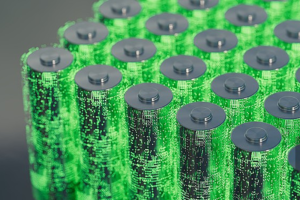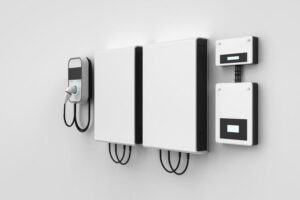Wind Turbine Generator, as a clean and renewable energy source, has developed rapidly around the world in recent years. The power generation capacity of wind turbines directly affects the economic and environmental benefits of wind power projects. So, what factors affect the power generation capacity of Wind Turbine Generator?
1. Wind resources: the “lifeline” of Wind Turbine Generator
The power generation of wind turbines depends on wind speed and wind energy density. The higher the wind speed, the greater the wind energy density, and the more electricity the wind turbine generates. Therefore, the site selection of wind turbines is crucial, and it is necessary to select areas with abundant wind resources, stable wind speed and suitable wind direction.
a. Wind speed:
Wind speed is the most critical factor affecting the power generation of wind turbines. Generally speaking, the higher the wind speed, the more electricity the wind turbine generates. However, excessive wind speed can also cause damage to wind turbines. Therefore, wind turbines need to be designed and manufactured according to different wind speed levels to ensure safe operation.
b. Wind energy density:
Wind energy density refers to the wind energy per unit area, which is proportional to the square of the wind speed. The greater the wind energy density, the more electricity the wind turbine generates. Therefore, when choosing the site for a wind turbine, it is necessary to consider the wind energy density and choose an area with high wind energy density.
c. Wind direction:
Wind direction refers to the direction from which the wind blows. The blades of a wind turbine need to rotate against the wind, so the installation direction of the wind turbine needs to be consistent with the local dominant wind direction to ensure that the wind turbine can maximize the use of wind energy.
2. The characteristics of the Wind Turbine Generator itself: the key to affecting power generation efficiency
The characteristics of the wind turbine itself, such as blade size, blade shape, rotor diameter, generator type, etc., will affect its power generation efficiency.
a. Blade size and shape:
Blade size and shape determine the efficiency of wind turbines in capturing wind energy. The larger the blade size and the more reasonable the blade shape, the higher the efficiency of wind turbines in capturing wind energy.
b. Rotor diameter:
The rotor diameter determines the area over which the wind turbine blades rotate. The larger the rotor diameter, the larger the area over which the Wind Generator captures wind energy and the higher the power generation.
c. Generator type:
Different generator types have different power generation efficiencies. For example, permanent magnet synchronous generators are more efficient, while asynchronous generators are less efficient.
d. Control system:
The control system of a wind turbine can adjust the blade angle and generator speed according to wind speed and direction to achieve optimal power generation efficiency.

3. Environmental factors: influences that cannot be ignored
Environmental factors such as temperature, humidity, and atmospheric pressure will also affect the power generation capacity of wind turbines.
a. Temperature:
Temperature affects the efficiency of wind turbines. The higher the temperature, the lower the air density, the lower the wind energy density, and the wind turbine’s power generation will decrease.
b. Humidity:
Humidity affects the efficiency of wind turbines. The higher the humidity, the higher the air density, the higher the wind energy density, and the wind turbine’s power generation will increase.
c. Atmospheric pressure:
Atmospheric pressure affects the efficiency of wind turbines. The higher the atmospheric pressure, the higher the air density, the higher the wind energy density, and the wind turbine’s power generation will increase.
4. Other factors: details that affect power generation capacity
In addition to the above main factors, there are some other factors that will affect the power generation capacity of wind turbines, such as:
a. Maintenance:
Regular maintenance can ensure that wind turbines are in optimal operating condition and improve power generation efficiency.
b. Grid load:
Too high grid load will affect the power generation of wind turbines.
c. Configuration of wind turbines:
The configuration of wind turbines, including the number, capacity, and layout of wind turbines, will also affect power generation efficiency.
d. Wind farm environment:
The wind farm environment, including terrain, vegetation, geology, etc., will also affect the power generation capacity of wind turbines.
5.The future of Wind Turbine Generator: the key to improving power generation capacity
In the future, with the advancement of technology, the power generation capacity of wind turbines will be further improved.
a. More advanced wind turbine technology:
For example, larger blade size, lighter materials, smarter control systems, etc. will be able to capture wind energy more effectively and improve power generation efficiency.
b. Rapid development of offshore wind power:
Offshore wind energy resources are abundant and stable, and the development of offshore wind power will become an important direction to improve the power generation capacity of wind turbines.
c. Application of wind power energy storage technology:
Wind power energy storage technology can convert wind energy into electrical energy and store it in batteries or other energy storage devices, and release it when needed, thereby improving the stability and reliability of wind power.
d. Complementarity of wind power with other energy sources:
Wind power can complement other renewable energy sources, such as solar energy and hydropower, to build a cleaner and more efficient energy system.
e. Improvement of the wind power industry chain:
Improving the wind power industry chain and improving the efficiency of wind turbine manufacturing, installation, maintenance and other links will help reduce wind power costs and enhance the competitiveness of wind power.
6. Wind turbines: the future of clean energy
As a clean and renewable energy source, wind turbines will play an increasingly important role in the future energy system. With the continuous advancement of technology and the continuous expansion of applications, the power generation capacity of wind turbines will continue to increase, providing humans with cleaner, more efficient and sustainable energy.
Summary:
The power generation capacity of wind turbines is affected by many factors, including wind resources, the characteristics of the wind turbine itself, environmental factors and other factors. In the future, with the advancement of technology and the expansion of applications, the power generation capacity of wind turbines will continue to increase, providing humans with cleaner, more efficient and sustainable energy.
Wind Turbine Generator:How Do Wind Turbines Work?





